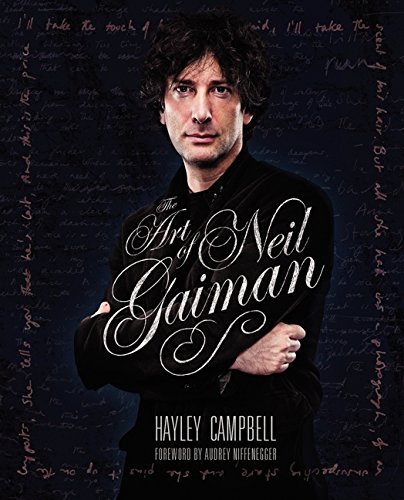
I was first introduced to Neil Gaiman through his Sandman comics at a time when most people were introduced to Neil Gaiman through his Sandman comics. I read the collected trade paperbacks of The Sandman at end of the millennium while working at a Barnes & Noble, a few years after the series’ monthly run had ended. I hadn’t been a regular comic-book reader since 1981, deciding to take a stand and quit cold turkey when the prices went up to a whopping 50 cents an issue, which was more than my limited budget could stand, as other priorities loomed as high school began.
I missed out on the beginning of what some call the Modern Age of Comics, so not only did I miss the debut of Morpheus, the King of Dreams, but other landmark events during that time such as The Dark Knight Returns and Watchmen ushering in this new era, as well as Spider-Man’s “Clone Saga,” The Death of Superman, and the formation of Image Comics.
Thankfully, the industry had embraced repackaging comic books into trade paperbacks, allowing me to do some catching up. I became a fan of The Sandman and Gaiman, and if that had been all he had written, it would have been enough to secure him a place as a beloved cult figure. Luckily, he had many more stories to tell, which has led to him becoming a best-selling author of books for both adults and children, a writer of screenplays and television episodes, and his work has been adapted by others into films such as Stardust and Coraline.
Haley Campbell’s The Art of Neil Gaiman is a fantastic accounting of his life and career. With Gaiman providing access to his archives, which will no doubt make her the envy of many, Campbell introduces readers to “Very Early Neil” and then presents the many variations of the writer before and after he became the beloved cult figure who wrote The Sandman. He was a punk rock singer, a magazine writer, and an author of books about Duran Duran and Douglas Adams’ The Hitchhiker’s Guide to the Galaxy. She covers his comics for 2000 AD, DC/Vertigo, and Marvel. There’s pages dedicated to his novels and short stories and picture books and radio plays and movies and work with the Comic Book Legal Defense Fund. And of course, The Sandman, including two pages from his latest return to Dream in The Sandman: Overture.
Alongside the text, which features archival interviews of Gaiman and his friends and associates, the book impresses most with its imagery. In addition to the artwork from comics and book jackets, the most intriguing material are the personal photos and copies of scribbled notes and typed script pages that provide a look at the man and the writer in his rawest form not usually seen by the public.
The Art of Neil Gaiman is an essential addition to any fan’s library. The only drawback is that due to Gaiman’s prolific nature, the book will soon be made incomplete. Hopefully, the prep work for Volume 2 will begin shortly.